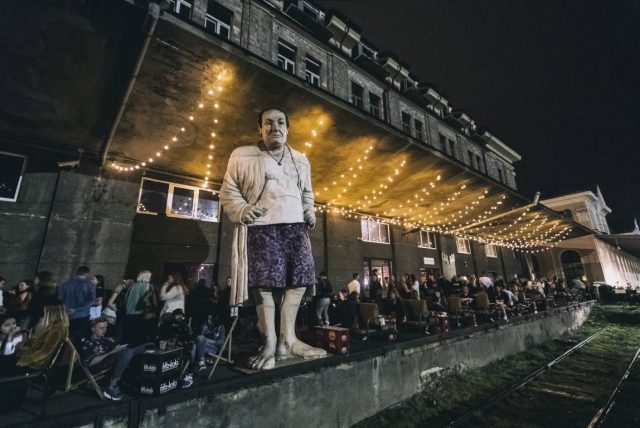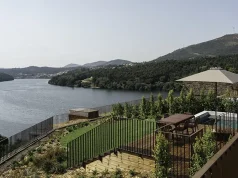
During the 45 years under Soviet rule, numerous factories, power stations, and other industrial plants were built in Lithuania. After the country regained its independence in 1990, lots of these buildings were abandoned. However, in the past decade, cities around the country—including the capital Vilnius—have taken initiative to turn unused industrial sites into cultural hubs espousing the values of independent Lithuania.
“The new generation of Lithuanians has found many creative ways to repurpose Soviet heritage sites,” said Elena Babarskaitė, PR Project Manager at Lithuania Travel, the country’s national tourism development agency. “Thanks to this creativity, today the once-abandoned industrial buildings have become cultural hotspots that promote diversity, inclusion, openness, and tell a different—modern—story to all our visitors in Lithuania.”
Below are four out of many industrial plants in Vilnius that have been turned into bars, cultural spaces, and museums, and are especially great for those traveling to the country for a short stay.
Trainspotting and drinks in PERONAS bar
Located just by the train tracks in Vilnius is an industrial “raw” bar PERONAS. It is situated in the old train station building that was originally constructed in 1950 and mainly served as an intermediary point for passengers traveling from Saint Petersburg to Warsaw.
Even though traveling outside of the Soviet Union was highly restricted and the train station was reserved for a small number of government-screened individuals, today PERONAS welcomes travelers from all over the world. A social gathering spot, an occasional art gallery, and home to the locally famous statue of the notorious Tony Soprano sculpted by Donatas Jankauskas, PERONAS is beloved by tourists and locals alike. In fact, it has become such an essential part of some people’s lives that the night before the country relaxed its lockdown restrictions, die-hard PERONAS fans formed a tent line outside the bar anticipating its reopening.
Learning about the art of beer-crafting at Smoke Factory
The 19th-century building that operated as the world’s largest scythe factory during the Soviet era is now home to a cultural space, a craft brewery, and a boutique bar. Smoke Factory is located in Naujoji Vilnia—a neighborhood that housed numerous advanced industrial plants during the Soviet times but upon its collapse faced a series of bankruptcies, rise in unemployment, and was deemed as a culturally deserted area. Hence, Smoke Factory is one of several local initiatives aimed to revitalize this district.
To learn more about the stigma-fighting mission behind Smoke Factory, visitors have the opportunity to partake in a tour. As half of the building belongs to the beer brewery “Sakiškių Alus” too, after the tour through the factory’s history, the participants are also invited to sample a range of locally-crafted ales.
Peeking behind-the-scenes of music production at LOFTAS Art Factory
LOFTAS Art Factory is located in the former legendary electro-technics factory ELFA. Since the middle of the last century, ELFA supplied the entire Soviet Union with its tape recorders and was even awarded gold medals at international fairs in Paris and Florence.
Even though today LOFTAS has little to do with producing audio equipment, it does play a crucial role in the Lithuanian music scene. Serving as a concert venue, it gives the needed exposure to small bands and up-and-coming Lithuanian artists as well as hosts acclaimed musicians from around the world such as Fink, Rhye, and Darkside.
Interactive exhibits at the Energy and Technology Museum
The Energy and Technology Museum is located in the former central power station in Vilnius which was originally built around 1901–1903 but played an essential source of industrial energy in Soviet times. Today, it is known to challenge the established stereotypes of a traditional museum.
By telling a story of how industrialization has changed the face of the city, the museum’s exposition revolves around the concept of energy production; it allows visitors to get acquainted with the authentic equipment of a recently active power plant. In addition to providing the opportunity to learn by observing, the museum offers a range of interactive tours. One of them is “Technology and science for kids”, which presents scientific phenomena in a tactile way making them understandable to both kids and parents.
Usually, what attracts people to visit Vilnius is its abundant Baroque architecture, historical Old Town, and the luscious green zones. Visiting repurposed industrial sites in Vilnius, however, reveals an entirely different and less-explored side of the city and makes for an entertaining experience for a day or two. To learn more about a quick getaway in the capital of Lithuania, visit the Lithuania Travel website.





